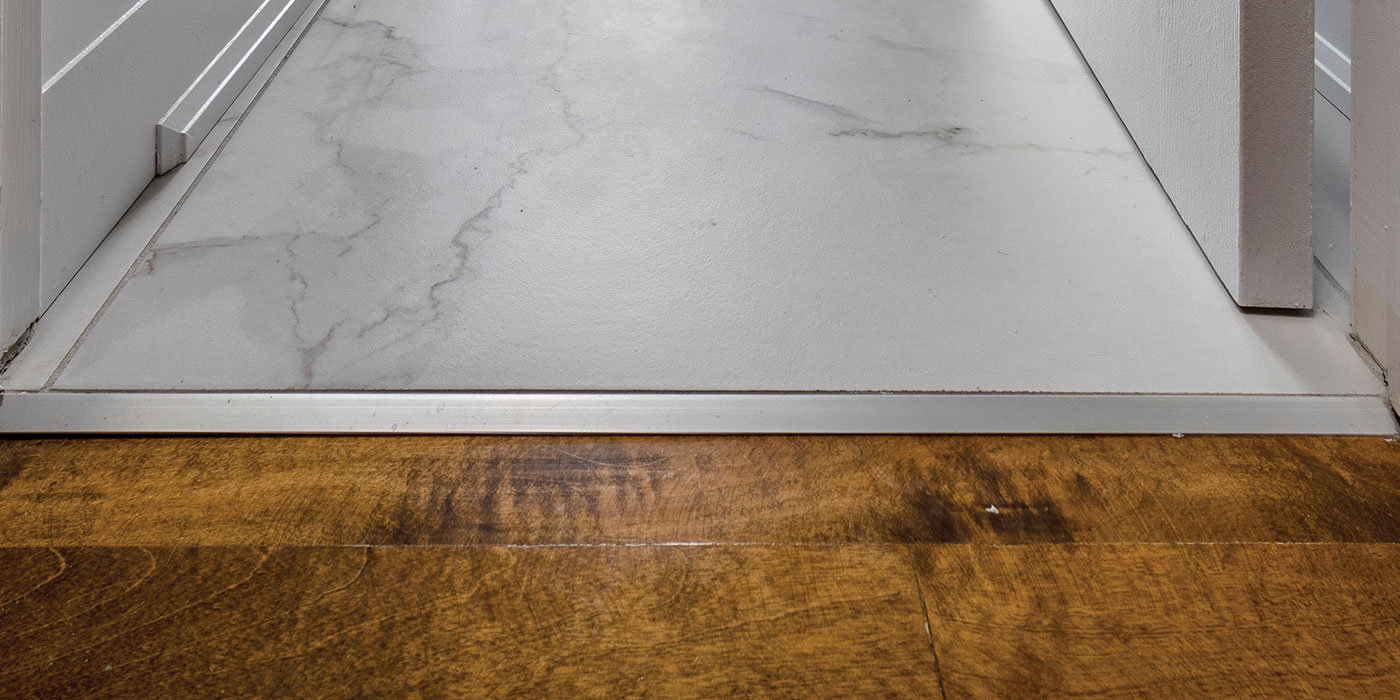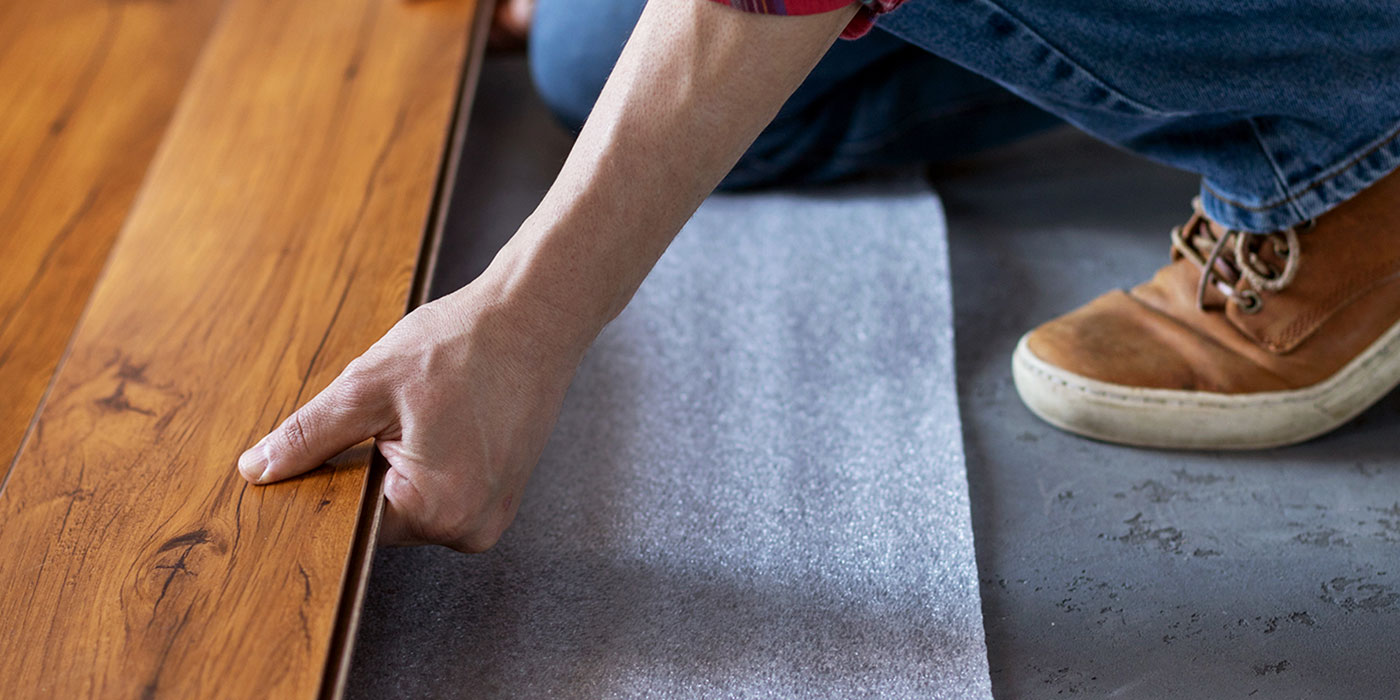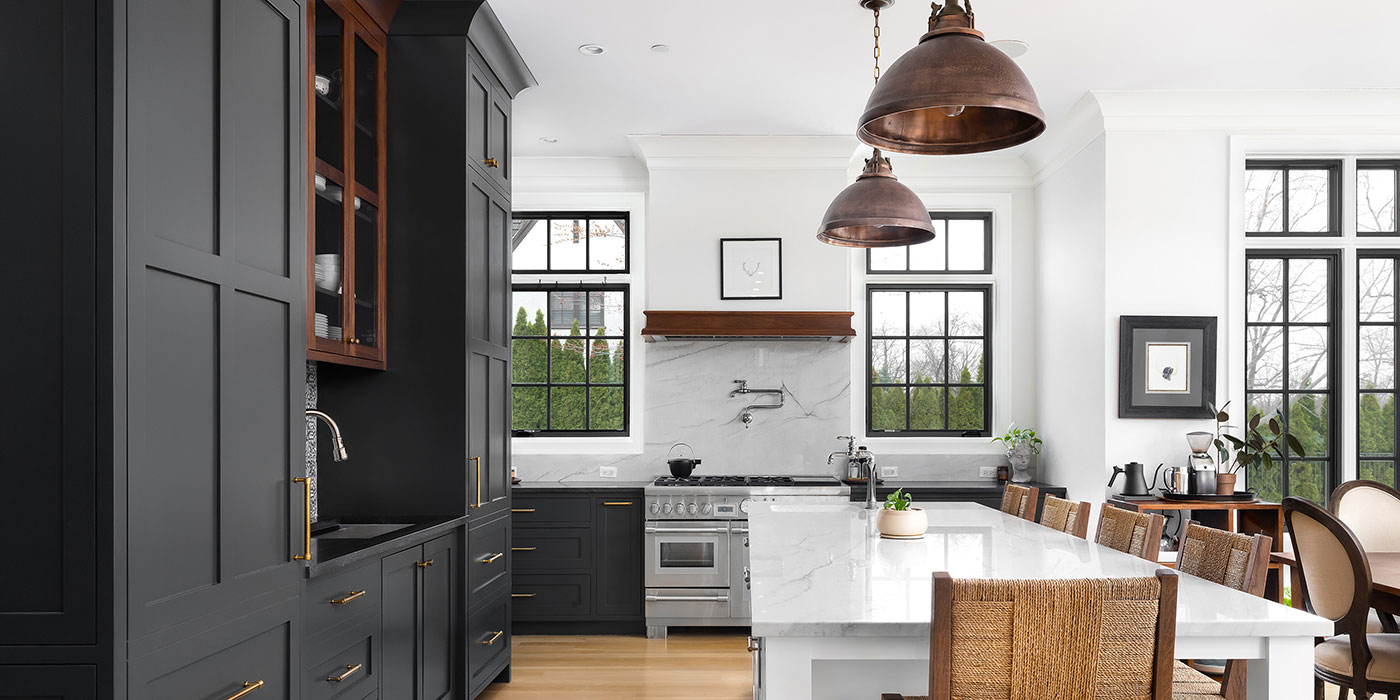While choosing a flooring material and style may be your biggest decision, there are a couple of other things you’ll need to consider. Here are three flooring elements to determine before you start your flooring project:
Quarter round vs shoe moulding

If you are laying a new floor and not removing your existing baseboards, you will end up with a gap between the new floor and the baseboard. This gap is commonly covered with either quarter round or shoe moulding. Quarter round is shaped like one quarter of a circle, hence the name. Shoe moulding is a thin moulding with a shaped profile. Both function the same way and which look you prefer is a personal choice.
Quarter round looks like an added piece at bottom of the baseboard. It can be stained the same colour as the flooring material so it blends in with the flooring or it can be painted the same colour as the baseboard so it blends in with the baseboard.
Shoe moulding looks like it is a detail of the existing baseboard and is almost always painted the same colour as the baseboard. Both are available in wood, primed MDF or polystyrene. The material you choose will depend on how you want to finish it. Both quarter round and shoe moulding install the same way. Quarter round is chunkier than shoe moulding so it is better at covering large gaps between the flooring and the baseboard.
Flooring transition strips

Flooring transition strips are used when two flooring materials come together. This can be to bridge a gap between the two floors or transition from one floor height to another. Transition strips can also cover seams between rooms that provide expansion and contraction space for wood floors.
There are many different types of transition strips and the correct one for your project will depend on the flooring materials coming together and if there is a height difference between the two floors. Transitions are available in assorted materials, most commonly metal, wood or plastic. Many wood-look flooring manufacturers offer transition strips in the same finish as the flooring for a unified look.
If the two floor heights are the same, a transition strip can be fashioned from a plank or two of wood flooring material laid perpendicular to the rest of the wood floor. There are different ways to install the more typical transition strips. Some are glued and some are nailed.
Choosing a transition strip can feel overwhelming. A TIMBER MART Flooring Expert can advise you on which is right for your project.
Underlayment

Subfloor and underlayment are often confused and both provide a specific function. Subfloor is the structural element of the floor and underlayment provides stability. Flooring underlayment is the layer that goes between the flooring material and the subfloor. Generally, it smooths out imperfections in the subfloor, adds soundproofing, cushions the flooring to make it more comfortable to walk on, protects against moisture and increases flooring longevity. It can be made of different materials and the one you choose will depend on what kind of flooring you are laying and where you are laying it.
Common materials are plywood, cement board, underlayment panels, cork, felt, rubber and thin foam padding. Each of these materials provides a specific function so it’s important to choose the correct one.
Read the flooring manufacturer’s installation instructions to find out the recommended underlayment. Some manufactured wood floorings include a built-in underlayment and additional underlayment is not necessary. In some cases, you can also use an existing floor as the underlayment for the new floor. If you are unsure what underlayment is right for your new floor, come talk to a TIMBER MART Flooring Expert.



